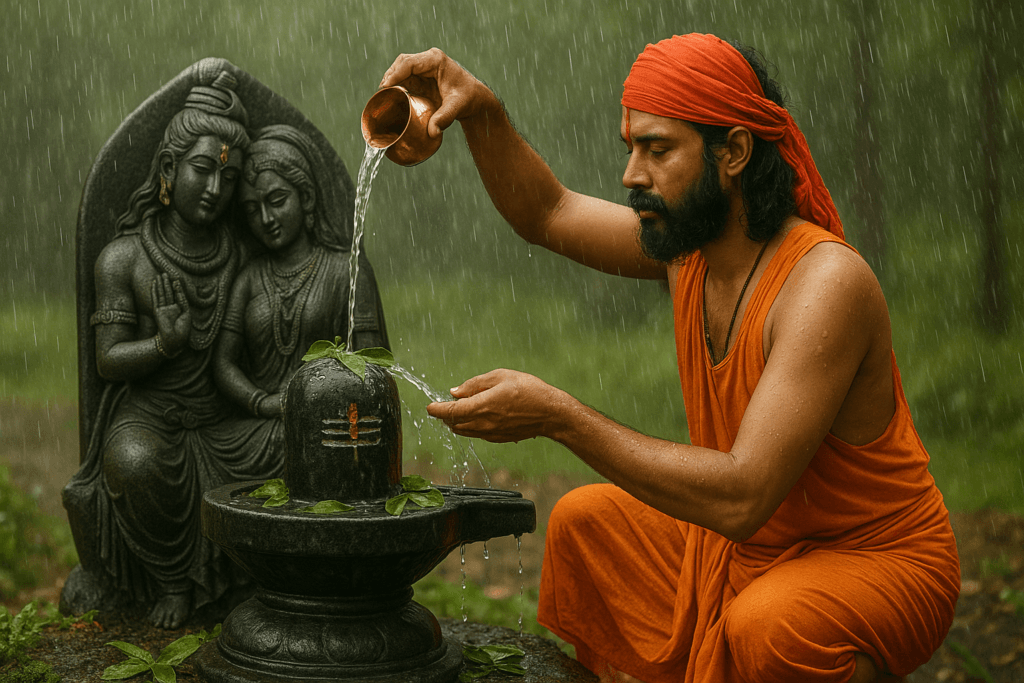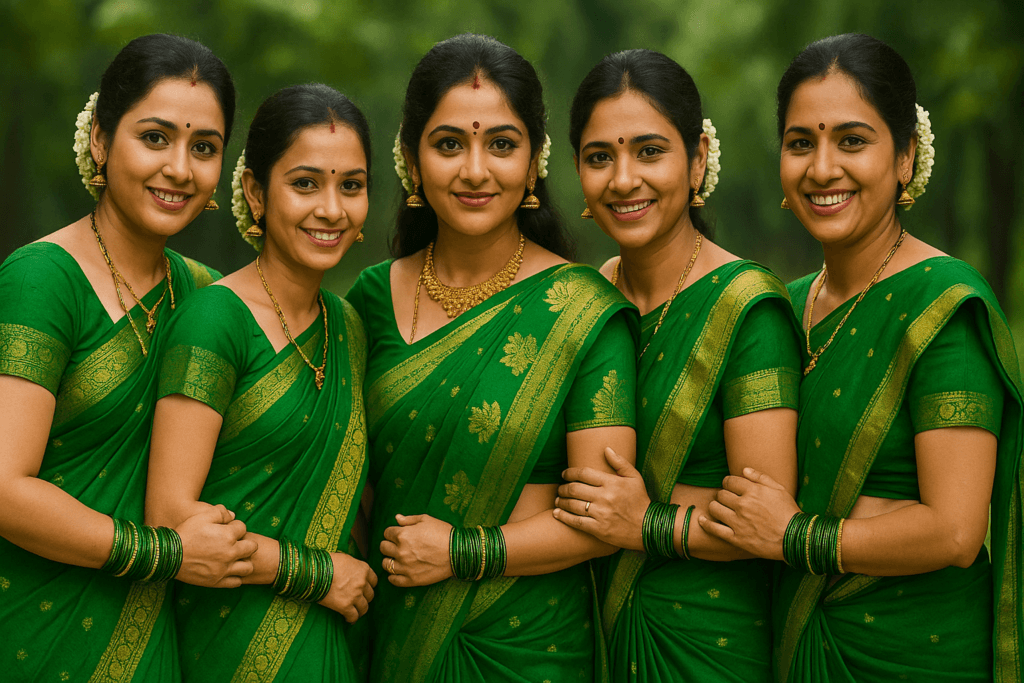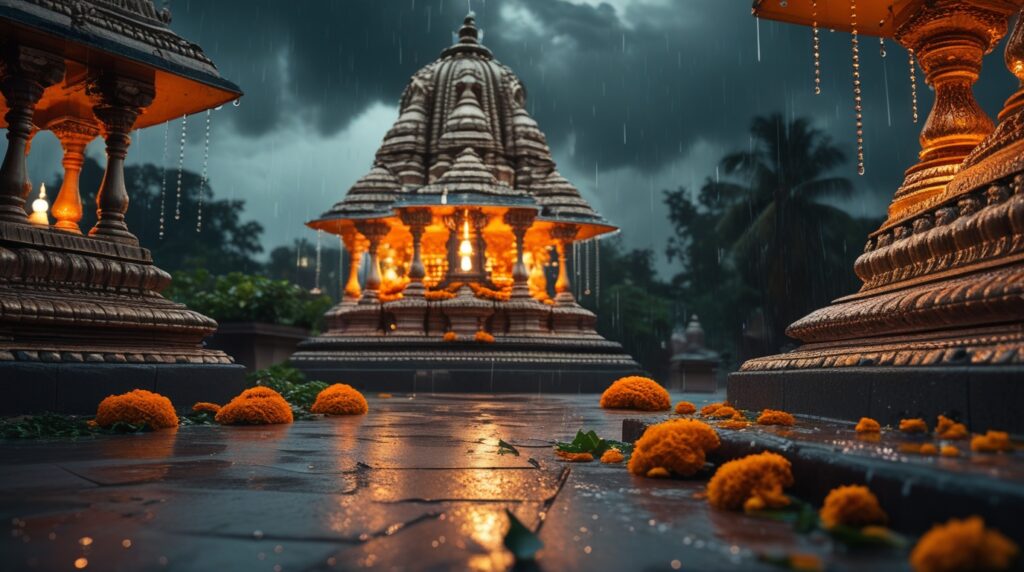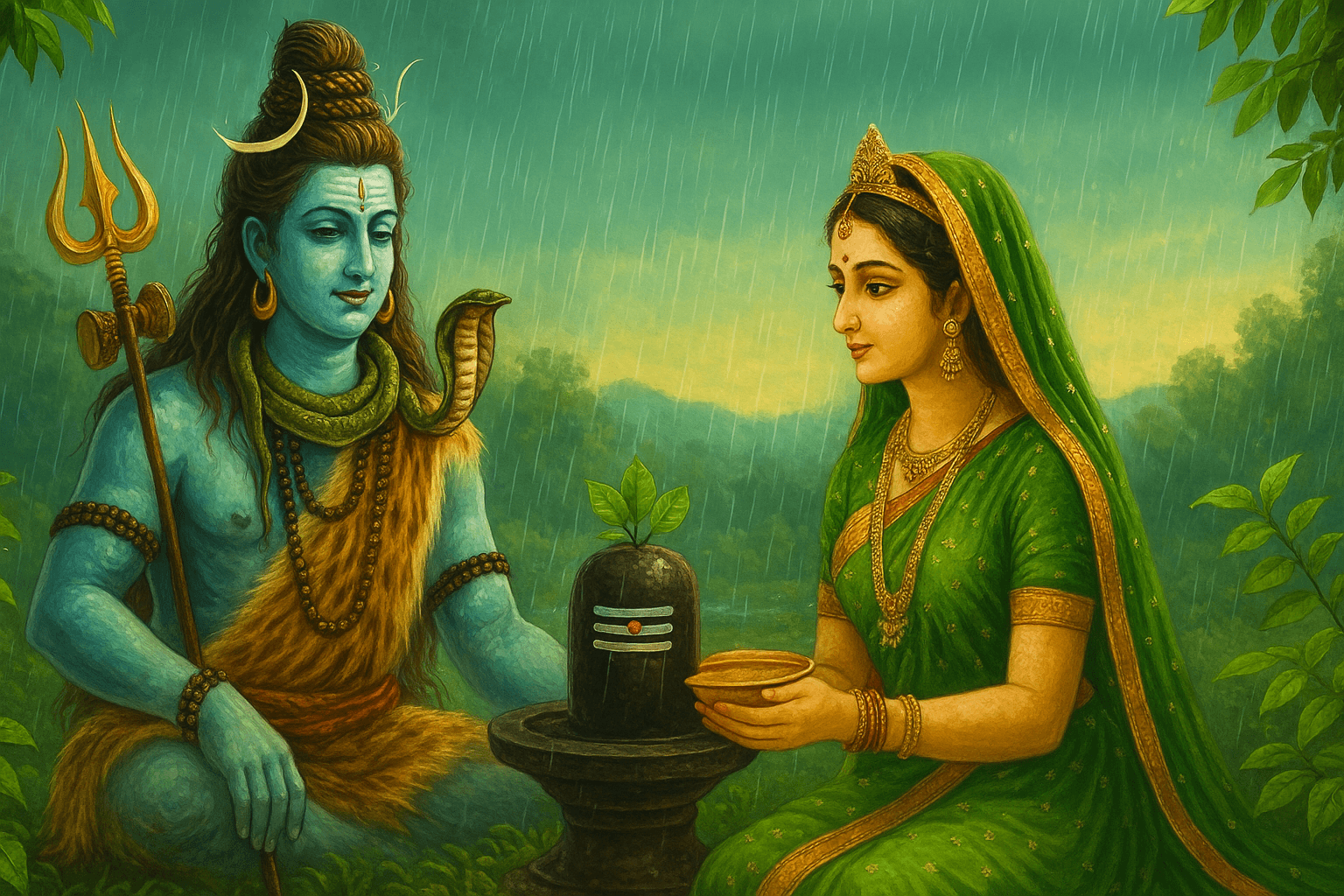Discover the spiritual significance of Shravan Maas (Savan), its connection with Lord Shiva, the symbolism of green sarees and bangles, and the rituals that bring blessings and prosperity during this auspicious monsoon month.
Table of Contents
Introduction: Welcoming the Monsoon and Savan’s Arrival
As the monsoon clouds sweep across the Indian subcontinent, drenching the earth in life-giving rain, the month of Savan (Shravan Maas) begins. This sacred period, usually falling between July and August, brings not only cooling relief from the summer heat but also a heightened sense of spirituality and festivity across India, especially in the north. Temples echo with chants, women don green sarees and bangles, and the air is filled with devotion and joy.
Savan is more than a season—it is a celebration of nature, devotion, and divine connection, particularly to Lord Shiva, the supreme deity of destruction and regeneration. This month is marked by profound symbolism, colorful rituals, and an abundance of faith.
Savan and Lord Shiva: A Divine Confluence
Why is Savan dedicated to Lord Shiva? The connection stems from a powerful episode in Hindu mythology—the Samudra Manthan, or the Churning of the Ocean.
During this cosmic event, as gods and demons churned the ocean to obtain divine treasures, a lethal poison—Halahala—emerged. To save the universe from destruction, Lord Shiva drank the poison. His throat turned blue, earning him the name Neelkanth, and Savan is believed to be the time when this event occurred.
To soothe Shiva, devotees perform Jal Abhishek—offering cool water, milk, and other sacred items to the Shivling. The rains themselves are seen as nature’s Jal Abhishek.
Key Rituals and Practices
- Savan Somvar Vrat: Fasts observed every Monday (Somvar) to seek blessings of Shiva.
- Jal Abhishek Shiva: Devotees pour water, milk, honey, and ghee over the Shivling.
- Offerings: Bael Patra, Dhatura, white flowers, and sandalwood are offered.
- Kanwar Yatra: Pilgrims (Kanwariyas) carry sacred Ganga water on foot to offer at Shiva temples, especially in states like Uttarakhand, Bihar, and Uttar Pradesh.
Worship during Savan is said to fulfill desires, bring peace, health, and prosperity, and purify the soul.

The Significance of Green: Why Women Embrace This Hue in Savan
One of the most enchanting sights during Savan is women dressed in vibrant green sarees and adorned with green bangles. This color choice is deeply symbolic and spiritually resonant.
Symbolism of Green
- Nature and Prosperity: Green reflects the lush growth of the monsoon. It symbolizes fertility, growth, abundance, and hope. During Savan, it also signifies renewal of life and divine femininity, mirroring the vibrant energy of nature and the blessings of Parvati, Shiva’s consort.
- Lord Shiva’s Favor: It is believed that green is soothing to Shiva, especially as a complement to the poison (blue) in his throat.
- Marital Bliss and Longevity: For married women, green is a color of suhaag (married life). Wearing green is a prayer for the long life and well-being of their husbands.
- New Beginnings: Green also embodies freshness, rejuvenation, and positive energy.

Green Sarees and Bangles: A Cultural Tradition
Wearing green bangles in Savan is more than a fashion choice. Bangles represent marital harmony, and their rhythmic clinking is considered auspicious.
Neighborhoods and markets bloom with stalls selling beautiful green bangles. Women often gather together to apply mehendi, sing bhajans, and share stories of faith and devotion, creating a shared sense of joy and cultural bonding.
Why is Savan Considered Auspicious?
Divine Energy and Shiva’s Presence
Savan is believed to be the time when divine energy is most accessible. The Shiva Tattva (principle) is highly active, making it an ideal time for meditation, prayer, and seeking spiritual growth.
Abundance and Fertility
As the rains nurture the earth, they also symbolize the fertility of the land and the blessings of creation. This makes Savan a month of abundance, freshness, and prosperity.
A Time for Devotion and Reflection
Many use this time to:
- Reconnect with spiritual practices
- Read scriptures and chant mantras
- Practice self-restraint through fasting and meditation
Associated Festivals in Savan
- Hariyali Teej: Celebrated by married women with singing, dancing, and fasting for marital bliss.
- Nag Panchami: Worship of serpents, symbolic of Shiva’s cosmic energy and control over fear.
- Raksha Bandhan (sometimes falls in Savan): Celebration of sibling bonds and protection.
These festivals enhance the spiritual significance of Savan and make it a month of celebration, reflection, and connection.

Conclusion: Embracing the Spirit of Savan
Savan, or Shravan Maas, is a deeply spiritual and celebratory month that blends faith, tradition, and nature’s beauty. It is a time to worship Lord Shiva, embrace the healing power of the monsoon, and celebrate the vibrant traditions like wearing green sarees and green bangles.
Whether you’re observing Savan Somvar Vrat (fasts), performing Jal Abhishek, visiting temples, wearing green, or simply appreciating the rain, let this month be a reminder of the spiritual and cultural richness of Sanatan Dharma. each act is a tribute to the divine and a step closer to inner peace and prosperity.
How do you honor Savan’s spirit in your family? Share your stories, traditions or photos in the comments and celebrate togetherness!


1 thought on “Savan & Shiva: A Divine Monsoon Connection”